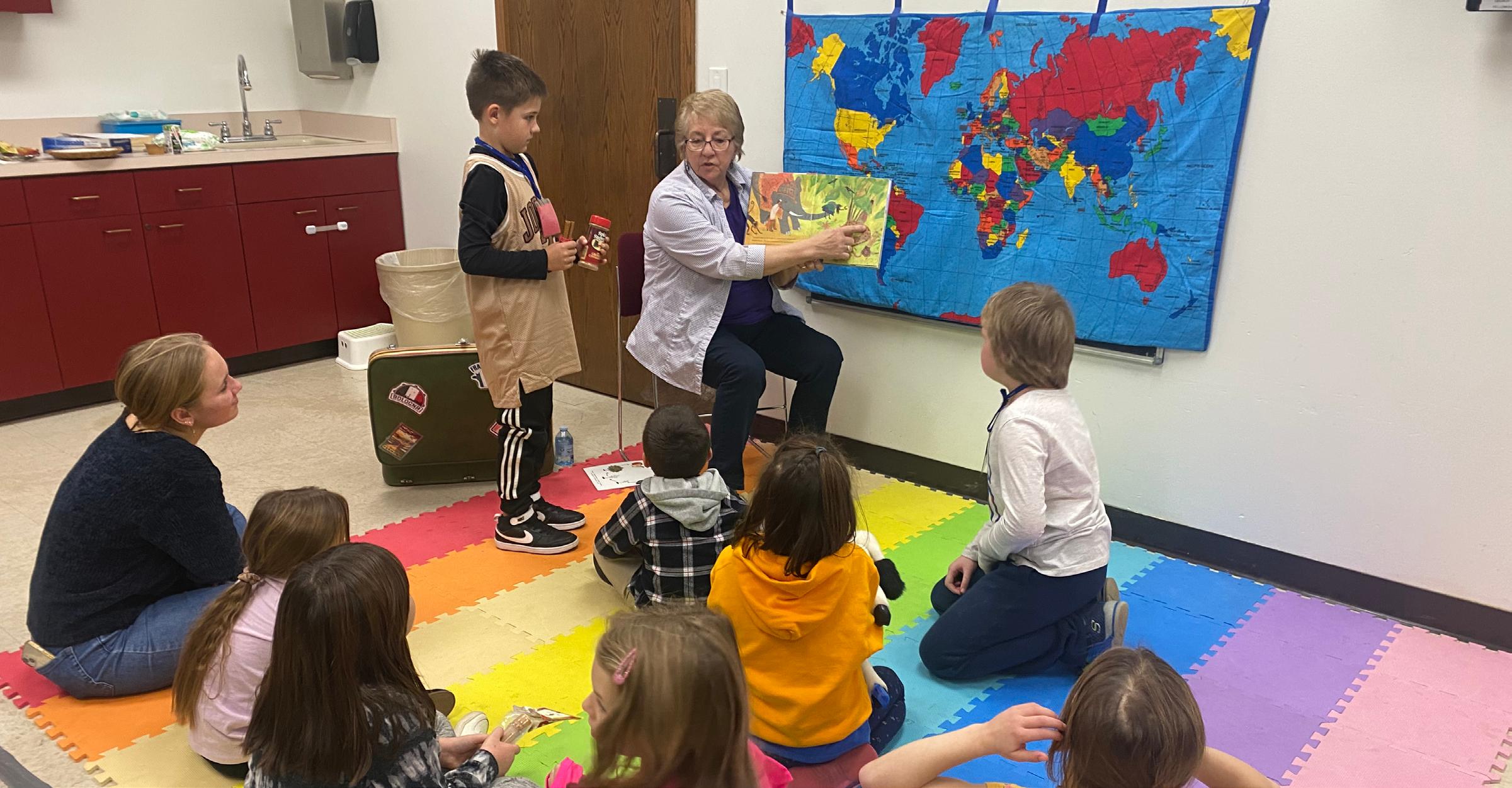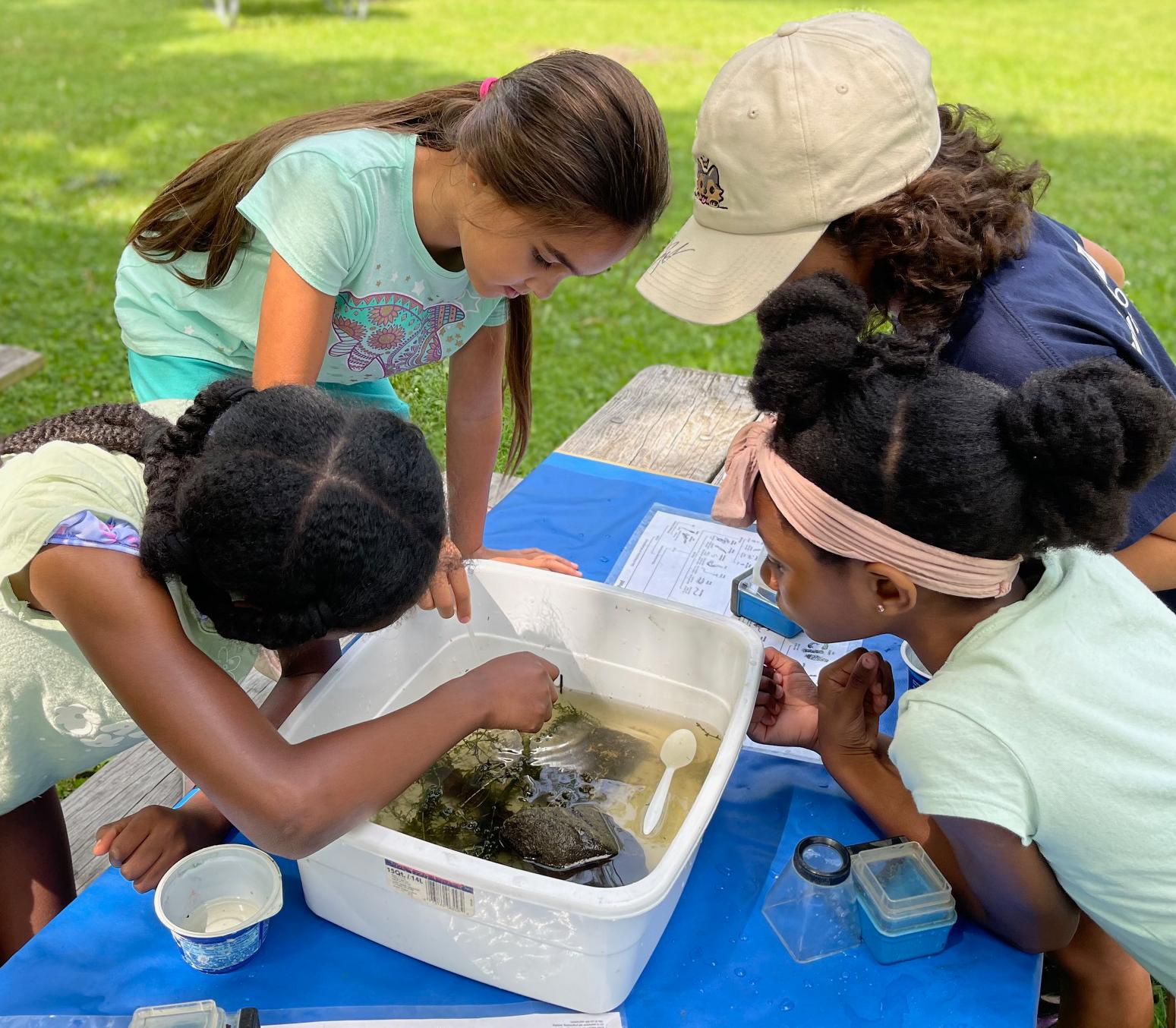
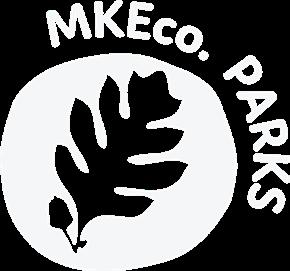




Let us share our respect and passion for the natural world with your students. Our awardwinning programs make real-world connections to your classroom learning, cultivate children’s curiosity, and deepen their understanding and appreciation of the world they live in.
Whether you are joining us for a field trip at Wehr’s 220-acre nature preserve, exploring a natural area with our naturalists at a Milwaukee County park, or inviting us into your classroom, we work with you to create quality learning experiences.
Our Educational Goals:
• Provide purposeful, developmentally appropriate learning opportunities for children of all abilities.
• Help children connect with nature in a fun and safe manner.
• Encourage children to ask questions, work together, and follow their curiosity to deepen their understanding of the natural world.
• Integrate current learning standards and best teaching practices into all programming.
Nature Education for All

We believe everyone deserves to have equitable access to nature. We continuing to grow our adaptive tools to be able to better serve people of all abilities. Please contact us for information regarding programmatic accommodations, mobility and sensory supports. For more information, please contact Emily Brown, Access & Inclusion Coordinator, at (414) 425-8550 or emily.brown@milwaukeecountywi.gov
We understand that financing a field trip can be a challenge. Through our Kids in the Park Education Fund, Wehr Nature Center and our non-profit partner, the Friends of Wehr, offer financial support for schools located within Milwaukee County. This scholarship program provides a bus stipend and reduces the perstudent field trip fee to $1 per child. You can find information about the fund and how to apply at: friendsofwehr.org/kidsinthepark
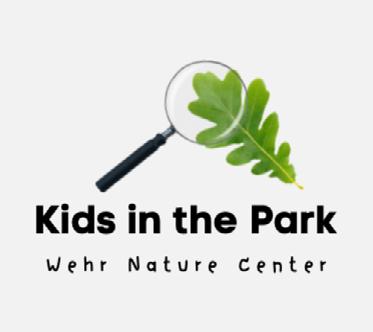
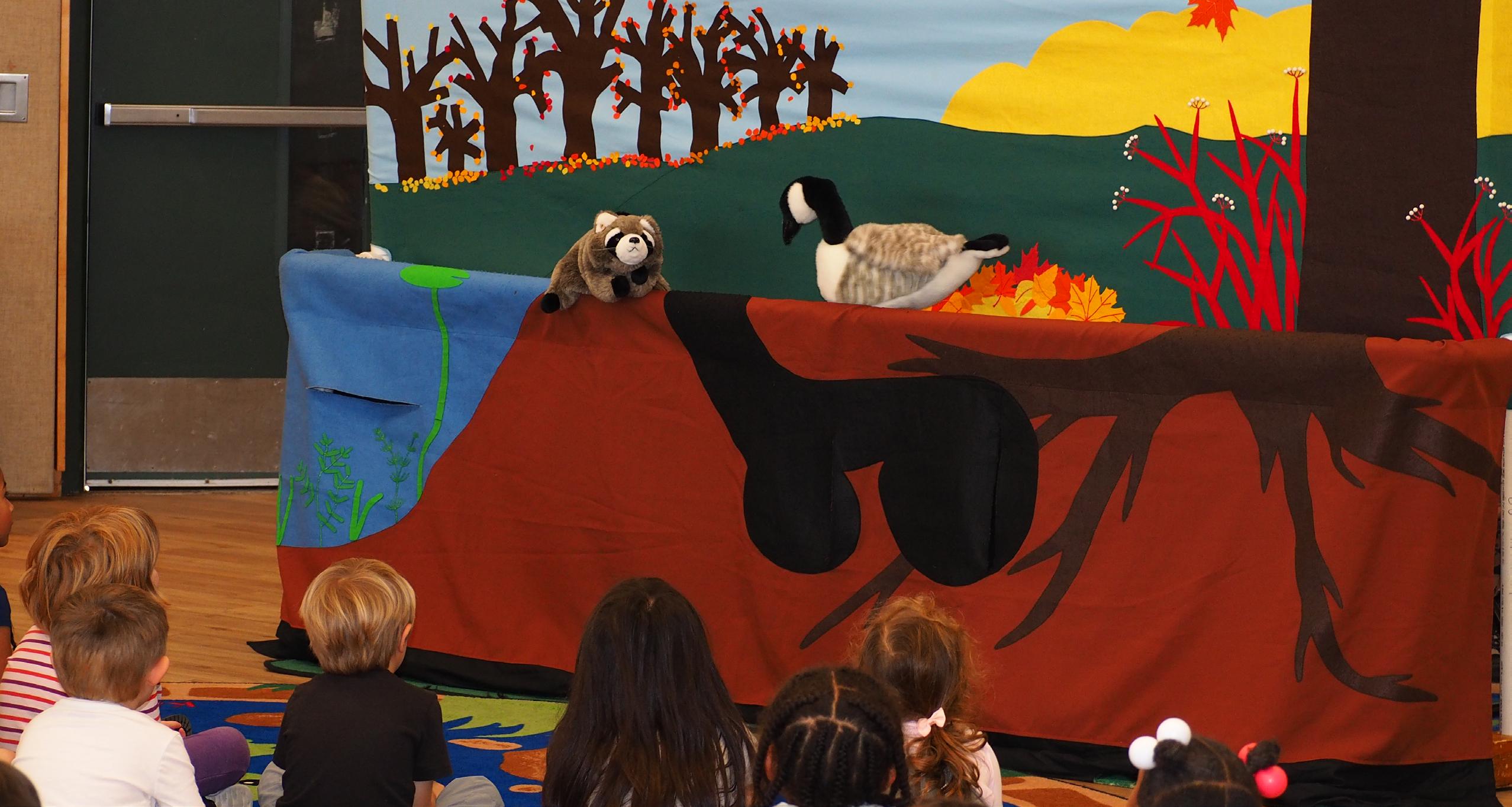
We offer a wide range of program topics, formats, and locations. This guide will help you select a program that supports your classroom learning.
The guide is arranged according to age/grade level. Details on program length, locations, season, and subject focus can be found in the program description.
Complete the online program request form. Our registrar will contact you via email to confirm your program. Reservations for the following school year can be made beginning April 1. Reserve a program
We recommend requesting your program as soon as possible, but require at least one month prior to your preferred date to schedule and confirm. If you have questions, please contact us at (414) 425-8550 or wehreducation@gmail.com
Early Elementary (K3 – 1st) pages 5-9
Elementary (1st – 4th) pages 10-13
Middle and High School (5th – 12th) pages 14-15
Enrichment Programs pages 17-18
(see page 3 for map)

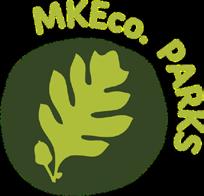
Explore our wetlands, woodlands, prairie, and pond, all within a short walk from our accessible visitor center.
Meet us at the park! Outreach programs utilize park pavilions (with restrooms) and the natural areas in our Milwaukee County Parks.
Can’t fit in a field trip? Our in-school programs bring nature into your classroom, library, or daycare facility.
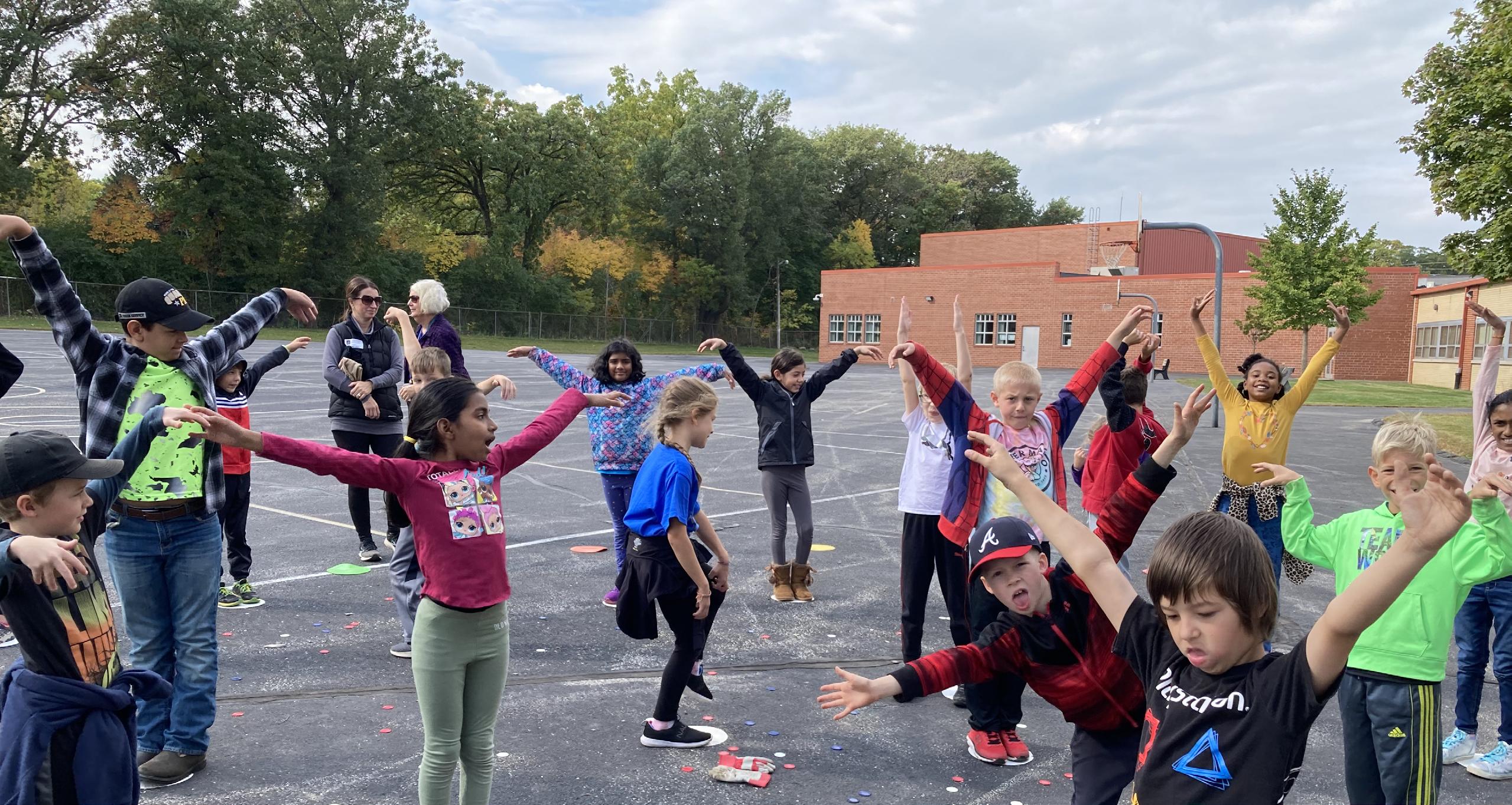
A confirmation/invoice will be sent to the emails of both the teacher and office contact for billing within five business days of booking.
Field trips to Wehr or a Milwaukee County Park:
$6 per student for schools within Milw. County
$7 per student for schools outside Milw. County A $110 minimum fee applies. Most field trip programs have a maximum capacity of 60 students.
at
$150 per 1-hour program session with a capacity of 30 students. Additional sessions are $110 each booked immediately following the program.
Additional Fees:
Some programs have a material fee. These perstudent project fees are listed in the program description.
Mileage fees are charged for in-school programs offered outside of Milwaukee County.
Extra adults beyond the allowed ratio of 3 chaperones for every 10 students will be charged at the student rate.
Chaperones help cultivate a safe and encouraging learning environment. Wehr Nature Center requires a minimum of one adult (teacher, aide or parent) to accompany every 10 children at our outdoor field trips. Three adults per ten children are free. Additional chaperones beyond this ratio will be charged at the child rate.
Payment is due 30 days prior to your program date and can be made with cash, credit card, or check.
Wehr Nature Center does not cancel field trips based on weather. Alternate, indoor activities will be conducted if dangerous weather prevents outdoor activities. If your school has a weather related cancellation, we will make every effort to accommodate rescheduling.
If you cancel, refunds are as follows: 30+ days prior = full refund
15-29 days prior = refund minus $35 fee 0-14 days prior = no refund
If you cancel within 29 days and have not yet paid, you will be charged a $35 administrative fee.

Our Early Elementary programs bring the natural sciences to life for your young students. Interactive story times, finger plays, songs, games, crafts, and natural artifacts introduce science topics in an age appropriate way.
Most of our Early Elementary programs are available as both in-school and field trip formats. Field trip programs to Wehr or a Milwaukee County Park are 1.5 hour and include a guided outdoor discovery walk. Can’t fit in a field trip? Our 1-hour in-school program sessions bring nature into your classroom, library, or daycare facility.

K5–1st • 1–1.5 hour Fall is harvest season and apples are high on the list. This program offers two “flavors” to choose from depending on your classroom focus and child grade.
K3–K5 students observe a year in the life of an apple tree with The Apple Pie Tree by Zoe Hall. They explore the apple tree as it changes throughout the seasons and meet the animals that visit it during the year. Children will taste a variety of apples and compare and contrast their findings. Each child will create a potpourri apple pie.
Key Concepts: life cycles, seasonal changes
K5–1st students take an imaginary trip around the globe to gather ingredients to bake an apple pie.
Marjorie Priceman’s book, How to Make an Apple Pie and See the World, shows students the worldwide journey their food takes before it arrives at our grocery store. Children will taste a variety of apples and compare and contrast their findings. You may choose for the children to make a potpourri pie or a real mini apple pie.
Additional $3 per student for real pies.
Key Concepts: geography, measurement, seasonal changes
K5–1st • 1.5 hours

In this original puppet show, children follow Canada Goose as he spends his fall in Wisconsin trying to decide what to do for the winter. Children go on a fall nature discovery hike that helps reinforce Goose’s adventure.
Key Concepts: adaptations, seasonal changes
Cricket Song
K3–K4 • 1–1.5 hours

The Very Quiet Cricket by Eric Carle is brought to life through the use of puppets and insect sounds. Live crickets will be in attendance to help children learn about the insect world and contrast them with other animals. Each child will create a noisy cricket in a cup.
Key Concepts: adaptations, habitats, senses
K5–1st • 1–1.5 hours

In the book, Little Tom Turkey by Frances Bloxam, children discover the real lives of wild turkeys. They learn about hens, toms, poults, caruncles, wattles, and snoods using natural artifacts. Children will perform the turkey strut and the turkey call. Each child will create a terrific turkey out of natural objects.
Key Concepts: adaptations, life cycles, seasonal changes
K3–K5 • 1–1.5 hours
See full description on page 7
Possum’s Fall Adventure
K3–K4 • 1.5 hours


Celebrate fall with a harvest party! Children will explore what is happening in nature in fall through an interactive story time, a sensory walk, visits with live animals, and time in Wehr’s Early Childhood Play Space.
Key Concepts: adaptations, seasonal changes
K3–K5 • 1–1.5 hours

Children join in the telling of Nuts to You by Lois Ehlert and learn how squirrel’s behavior and home change with the seasons. Artifacts are used to teach about our “nutty” neighbors. Children create their own squirrel nest complete with squirrel and nut to retell the story at home.
Key Concepts: adaptations, habitats, seasonal changes
K5–1st • 1–1.5 hours

An interactive telling of The Salamander Room by Anne Mazer illustrates the importance of an animal’s habitat. A live salamander (if weather permits) and the life cycle of an amphibian is shared. Each child creates a stenciled salamander piece of artwork.
Key Concepts: habitats, life cycles, adaptations
K3–K4 • 1–1.5 hours

Children learn about turtle adaptations through an interactive version of Richard Buckley/Eric Carle’s The Foolish Tortoise. Artifacts, a craft, and a visit with a live Box Turtle (weather permitting) highlight turtle adaptations.
Key Concepts: adaptations, habitat, life cycles
K4–1st • 1–1.5 hours

Children use a room-sized spider web and Eric Carle’s The Very Busy Spider to better understand spiders’ weaving and varied use of webs. Supplemental materials emphasize the diversity and habitats of spiders. Participants make a spider craft to take home.
Key Concepts: adaptations, habitats, life cycles
K3–K5 • 1–1.5 hours
See full description on page 9
K5–1st • 1–1.5 hours
See full description on page 9


K4–1st • 1.5 hours

Come celebrate the sweet Wisconsin tradition of maple sugaring! Children meet “Maggie The Maple Tree” during an interactive story that discusses tree life cycles and seasonal changes. During a walk to the sugar bush children get to “hug” a sugar maple tree, use hand tools to drill tap holes in a log, and taste and collect sweet sap drips. Students watch us boil the clear sap into maple syrup and sugar and enjoy a taste of each!
Key Concepts: life cycles, seasonal changes
K3–K5 • 1–1.5 hours
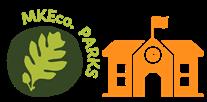
Children help the naturalist recreate parts of the story, Imogene’s Antlers by David Small. Real antlers and horns are included along with natural history lessons about White-tailed Deer. Children create their own pair of antlers to wear.
Key Concepts: adaptations, seasonal change
K3–K5 • 1–1.5 hours

Children are introduced to owls through a telling of Goodnight Owl by Pat Hutchins (younger students) or Jane Yolen’s Owl Moon (older), and explore the adaptations of these nighttime prowlers using mounts and artifacts. Everyone creates an owl puppet for a “hooting” good time.
Key Concepts: adaptations, seasonal changes
K3–K4 • 1.5 hours

Snow is cold, sparkly and fun! Children discover the beauty of winter and the challenges it poses to animals through an interactive story time, a sensory walk, visits with live animals, and time in Wehr’s Early Childhood Play Space.
Key Concepts: adaptations, seasonal changes
K5–1st • 1–1.5 hours

Using In the Snow, Who’s Been Here? by Lindsey Barrett George and a representational map, children utilize animal tracks and other clues to see who has been out and about on a snowy day. Feeding habits and seasonal activities of animals are emphasized. Children create an animal sewing card.
Key Concepts: habitats, adaptations, seasonal changes
K4–1st • 1–1.5 hours

Children fill a giant mitten with animals during a reading of The Mitten by Jan Brett. Discovery time uses puppets, animal skins, mounts, and pictures to share information about winter animal adaptations. Each child creates a mitten with the story characters so they can retell the story themselves.
Key Concepts: adaptations, seasonal changes
K5–1st • 1.5 hours

A clever but slightly confused Long-Tailed Weasel discovers the benefits of camouflage and winter adaptations in this original puppet show. A seasonal sensory hike engages children in discovery and wonder.
Key Concepts: adaptations, seasonal changes
K–K5 • 1–1.5 hours

Children enjoy a story about a bear at rest in Karma Wilson’s story, Bear Snores On. This enchanting story engages children in learning about animals looking for shelter. Children learn about hibernation and other ways animals spend the winter. Participants will create a paper plate cave for the story’s animals.
Key Concepts: adaptations, seasonal changes
K3–K5 • 1–1.5 hours

Eric Carle’s story Little Cloud introduces children to the water cycle. Using dramatic play, children become raindrops to better understand the water cycle. Weather concepts are also discussed as part of the program. Each child creates a special 3-D cloud.
Key Concepts: water cycle, seasons, weather
K3–K5 • 1–1.5 hours

Children learn about the diversity and adaptations of birds freal artifacts and Adelaide Holl’s book The Remarkable Egg. We discuss how bird feathers, beaks, and feet have adapted to various environments as the whole group “builds” a bird. The children decorate homemade binoculars to use in their own backyard.
Key Concepts: adaptations, life cycles
K3–K5 • 1–1.5 hours

Children discover the mysterious changes that happen as a tadpole grows into a frog from Leo Lionni’s Fish is Fish. Children create a “froggie” mask complete with a retractable tongue to help them think and act like frogs.
Key Concepts: life cycles, adaptations, habitats
Puppet
K5–1st • 1.5 hours

Lady Bug awakens from a winter sleep to discover she is very hungry. She visits her friends in search of herfavorite food, aphids. A hike, which engages children in discovery and wonder of spring secrets, follows this original puppet show.
Key Concepts: adaptations, seasonal changes
K5–1st • 1–1.5 hour

Children grow a life-like flower garden from seed to plant during an interactive telling of Jack’s Garden by Henry Cole. An exploration of what plants need to survive will follow the story along with the observation of different types of seeds. Children make their own “magic” bean bag necklace.
Key Concepts: life cycles, adaptations, seasonal changes
K3–K4 • 1.5 hours

Children join the springtime chorus as we explore the awakening natural world. Students learn about spring happenings through an interactive story time, a sensory walk, visits with live animals, and time in Wehr’s Early Childhood Play Space.
Key Concepts: adaptations, seasonal changes
K3–K5 • 1–1.5 hours

Children help a cottontail rabbit family explore the world and encounter new adventures with the book, Rabbits and Raindrops by Jim Arnosky. Children will learn about the life cycle and habits of this common neighborhood animal. Wearable crafts will be created to transform children into rabbits.
Key Concepts: adaptations, seasonal changes, life cycles
K3–K5 • 1–1.5 hours

Spring is an exciting time. Is it cold or warm? Is it sunny or cloudy? Is it raining or snowing? Children help bring spring to life with the story Cold Little Duck, Duck, Duck by Lisa Westberg Peters. They learn about our webbed-footed neighbors and their life cycles. Children will make a spring windsock craft to take home.
Key Concepts: life cycles, adaptations, seasonal changes
K–1st • 1–1.5 hours
See full description on page 9

“T” is for Turtle
K3–K4 • 1–1.5 hour
See full description on page 9

K3–K5 • 1–1.5 hours
See full description on page 9

K3–K5 • 1–1.5 hours

An interactive telling of The Very Hungry Caterpillar by Eric Carle is the basis of this program focusing on the life cycle of a butterfly. Models, puppets, and props help children understand caterpillars, butterflies and their feeding habits. Children make finger puppets of a caterpillar and butterfly.
Key Concepts: life cycles, habitats
K3–K4 • 1–1.5 hours

The Very Quiet Cricket by Eric Carle is brought to life through the use of puppets and insect sounds. Live crickets will be in attendance to help children learn about the insect world and contrast them with other animals. Each child will create a noisy cricket in a cup.
Key Concepts: adaptations, habitats, senses
K5–2nd • 1.5 hours

In this original puppet show, miraculous changes happen to a tadpole as he transforms into a toad. Toad meets many other animals living in and around Willow Pond who are changing and growing faster than you can say “metamorphosis.” A seasonal hike follows the show.
Key Concepts: life cycles, seasonal changes
K5–1st • 1–1.5 hours

An interactive telling of The Salamander Room by Anne Mazer illustrates the importance of an animal’s habitat. A live salamander (if weather permits) and the life cycle of an amphibian is shared. Each child creates a stenciled salamander piece of artwork.
Key Concepts: habitats, life cycles, adaptations
“T” is for Turtle
K3–K4 • 1–1.5 hours

Children learn about turtle adaptations through an interactive version of Richard Buckley/Eric Carle’s The Foolish Tortoise. Artifacts, a craft, and a visit with a live Box Turtle (weather permitting) highlight turtle adaptations.
Key Concepts: adaptations, habitat, life cycles
K5–1st • 1–1.5 hours

Wiggle and giggle with worms while exploring their underground world. We have adapted Linda Glaser’s book, Wonderful Worms and its great worm facts into an appealing felt board story. Children can touch, examine, and measure live worms and create original art with rubber worms.
Key Concepts: adaptations, habitats, recycling
K3–K5 • 1–1.5 hours

In creating an “indoor pond,” children get up close and personal with some pond critters. Frogs, beavers, geese, and dragonflies are just a few of the animals who appear in and around the pond. The program is based on In the Small, Small Pond by Denise Fleming. Children create a wooden dragonfly.
Key Concepts: life cycles, habitats

“We love Wehr. Your organization, communication, and creativity are excellent.”
Trinity Lutheran School Caledonia K5/1st grade teacher
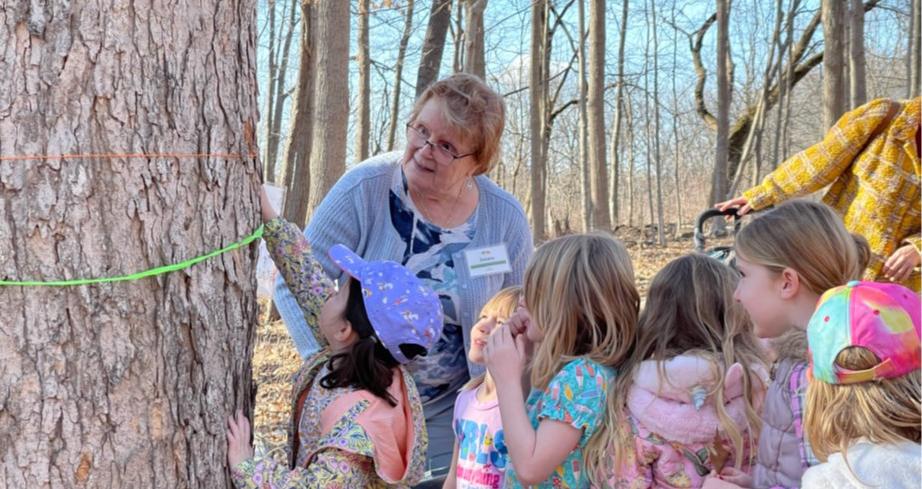
The data is clear. Time in nature benefits children’s mental and physical health, improves attention, and increases academic success. Our elementary education field trips are the perfect way to introduce your students to the joys of exploring outdoors while supporting their classroom learning. Programs are listed by the NGSS Disciplinary Core Idea (DCI) they support.
Most programs for these grades are in our field trip format, unless noted otherwise. In-school options for grades 1 – 4 can be found here.
1st–4th • 1.5 hours
May–mid-October

Discover and visit with the little creatures that run our world. Students learn how to identify different groups of arthropods by watching classmates in costumes model characteristics. Invertebrate life cycles are discussed using models and live animal examples. A discovery hike gives students a safe close-up experience with backyard invertebrates using collection tools and magnifiers. Children study adaptations by looking at legs, body parts, and wings of awesome crawly creatures they collect on their hike.
Key Concepts: life cycles, adaptations
1st–3rd • 1.5 hours
May–October

From summer shade to the air we breathe, we all need trees! Students explore the woods to find who depends on trees and how to use bark and leaf clues to identify familiar species. Children discover seeds, saplings, and snags on a tree life cycle scavenger hunt. The whole class works together to create a “living tree” to learn how tree structures help them survive.
Key Concepts: life cycles, adaptations
2nd–4th • 1 hour
Year‐round

Students delve into the nocturnal world of Wisconsin’s owls and discover facts about the feathers, hearing, and night flying of these beautiful “Tigers of the Sky.” They learn to listen for owl calls right in their own backyard. An owl pellet lab is available for an additional fee of $3 per student.
Key Concepts: adaptations, food webs
1st–3rd • 1 hour
May–September

This program introduces students to the complex lives of honey bees, beekeeping, and the essential role they and other pollinators play in our world. Children don costumes to participate in an interactive story, A Day in the Life of a Honeybee, examine hive equipment to learn what it takes to be a beekeeper, and get a taste of local honey. Live honey bees may be brought using a demonstration hive if season and weather permits.
Key Concepts: adaptations, life cycles
1st–4th • 1.5 hours
May–mid-October

Students discover nature’s connections as they explore life in and around a pond. Children will be amazed by the diversity of life in a scoop of water as they use hand-held microscopes to study the tiny invertebrates that are the backbone of the pond food web. Costumes are used to model the amazing adaptations of aquatic creatures and how everything is connected in the pond food chain.
Key Concepts: food webs, adaptations
“It was wonderful to get first-hand experience with the different parts of a food chain. Hands-on fun with the different macroinvertebrates was something that all the students enjoyed!”
Water Explorers, Star of Bethlehem, 2nd grade teacher
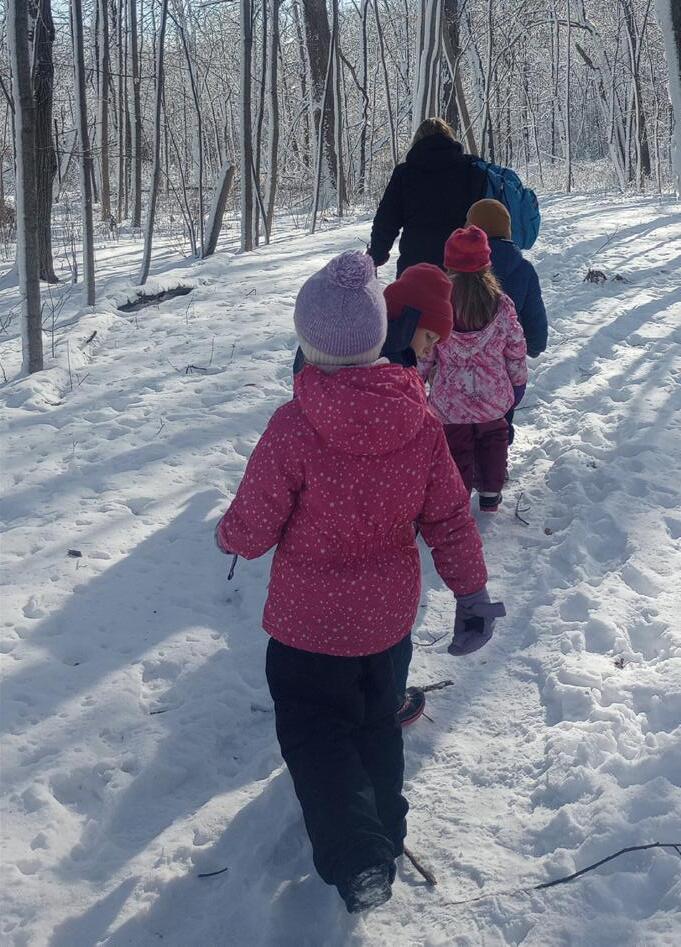
1st–4th • 1.5 hours
November–April

“Great questions and prompts to engage and challenge student’s thinking.”
Take your class on a tracking adventure to discover the clues animals leave behind and the physical structures that help them survive. Students practice observation, critical thinking, and scientific communication skills as their team of Nature Detectives works together to solve animal mysteries along our trails. Pre- and post-trip videos/digital resources are provided to support student learning about animal adaptations. Children will make a plaster cast of an animal track to take home.
Key Concepts: adaptations, interactions

Wisconsin’s Sweet Tradition
2nd–Middle School • 2 hours
mid-Febuary–March

Come celebrate the sweet Wisconsin tradition of maple sugaring! Students take a trip though time as they participate in a play about the history of maple sugaring from its Native American origins to the maple syrup farmers of today. During a walk through Wehr’s sugar bush, children identify trees, measure trunks to find the perfect sized tree, use hand tools to drill tap holes, and taste and collect sweet sap drips. Students watch us boil the clear sap into maple syrup and sugar and enjoy a taste of each! Everyone becomes a tree part in our “Human Tree Factory” activity that models how tree physiology impacts maple sugaring.
Key Concepts: plant physiology, Wisconsin history

“Weeds in the Wild tied seamlessly with our curriculum on environmental change and invasive species. The students got to see how invasive plants exist right here at the school and what measures can be taken. They got to feel successful in pulling the buckthorn, became experts in identifying it, and learned firsthand the impact when their “trees” were killed off. It’s a fantastic field trip experience.
Ms. Michel, Pleasant View
5th–High School • 2 hours
May–mid-October

Students become environmental detectives as they work to solve the mystery of Wehr’s yucky lake. The program begins with an interactive introduction to watersheds and how humans impact them. Groups then rotate through stations where they collect data on the water quality within Wehr’s own Tess Corners Creek watershed. Students use scientific sampling methods and tools such as a biotic index, turbidity tubes, and water chemistry kits to determine the source of pollution impacting Mallard Lake.
Key Concepts: human impacts on environment, watersheds, erosion
3rd–Middle School • 2 hours
May–October
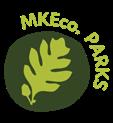
Students discover the “treasures” of our own Lake Michigan as they explore the beach, ravines, and bluffs of Grant Park’s famous Seven Bridges Trail. Children track waves, sift sand, and find fossil rocks along the shore. Groups collect data about water quality and the beach using a turbidity tube, thermometers and wind meters.
Key Concepts: human impacts on environment, geology
3rd–High School • 2 hours
April–November

Students learn about invasive plant adaptations and how humans can impact the environment for better and for worse. An interactive game models competition for resources and demonstrates how quickly invasive plants can change native landscapes. Children become environmental stewards by pulling Garlic Mustard/Buckthorn.
Key Concepts: human impacts on the environment, adaptations, interactions
4th–Middle School • 2 hours
May–October

“Why is there so much grass in the prairie?” “Why do pill bugs live under logs?” Children are challenged to observe and question like scientists as they explore Wehr’s ecosystems. Students compare the kinds of plants and animals found in each environment and use instruments to collect data about the abiotic conditions. An emphasis is placed on observation, measurement, questioning, and critical thinking skills.
Key Concepts: components of ecosystems, interactions, biomes
1st–3rd • 1.5 hours
mid-April–November

Habitat is more than a home; it is the place where you find the food, water, shelter and space you need to survive. Like people, animals and plants get what they need to survive from their “neighborhoods.”
Children will explore these natural neighborhoods as they visit forest, wetland, and grassland habitats.
Students learn about wildlife as they search for a “Dream Home” and “Groceries” for a variety of local critters.
Key Concepts: habitats, adaptations

Let’s Go Climb a Moraine
4th–High School • 2 hours

September–December; April–May
Students travel over moraines and kames as they investigate the impact of the Ice Age on our southeast Wisconsin landscape. A PowerPoint presentation and interactive models introduce the process of glaciation and geological time before we head outside in small groups to “Climb a Moraine.”
The hour long walk allows students to get a “foots-on” understanding of landforms as we explore the geological features of Whitnall Park.
Key Concepts: landforms, fossils, geological time
3rd–4th • 2 hours
November–April

Explore the properties of earth materials with Wehr’s outstanding collection of rocks and minerals. Students learn the properties of minerals and identify samples using a scientific key. Building on the new knowledge, children explore how rocks are transformed during the rock cycle using samples to create their own models. A scavenger hunt allows students to apply their knowledge as we explore Wehr’s fieldstone building and nearby outdoor areas (weather permitting).
Key Concepts: properties of earth materials, rock cycle
1st–3rd • 1.5 hours
April–November

Students become soil scientists as they study the ingredients, properties, and importance of soil. They use sieves to explore soil textures, hike to find soil critters, rocks, and signs of erosion. They will leave understanding how soil made their breakfast!
Key Concepts: soil properties, erosion, interactions
“This experience fits along nicely with our science curriculum about rocks. Good for an introduction to our unit on pebbles, sand, and silt.”
Rocks & Minerals, Little Prairie Primary
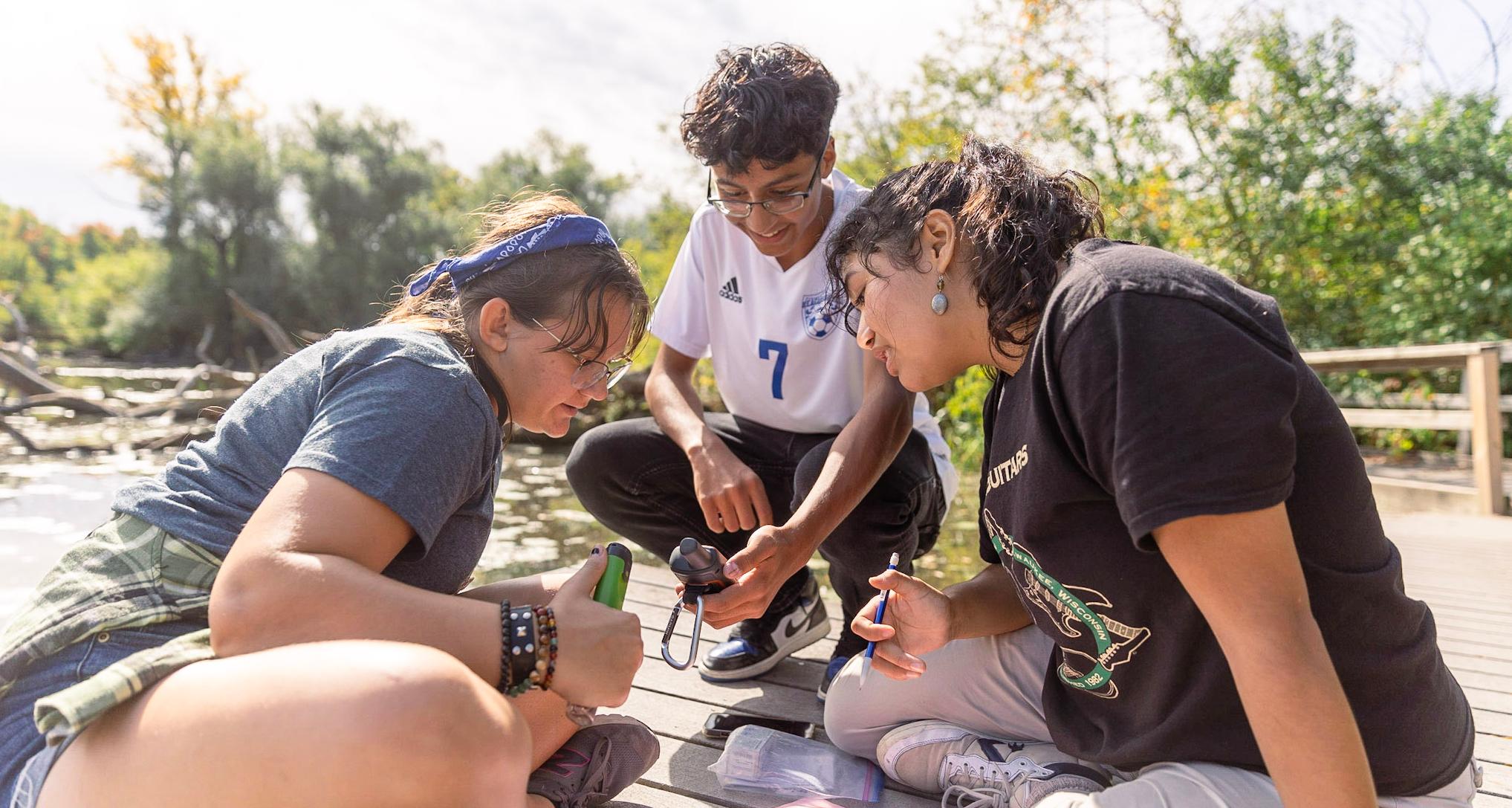
We understand the challenges of taking your middle and high school students on field trips! Our programs for secondary students emphasize active learning that fosters teamwork and inquiry. Contact our staff to discuss options for all-day or large group programs.
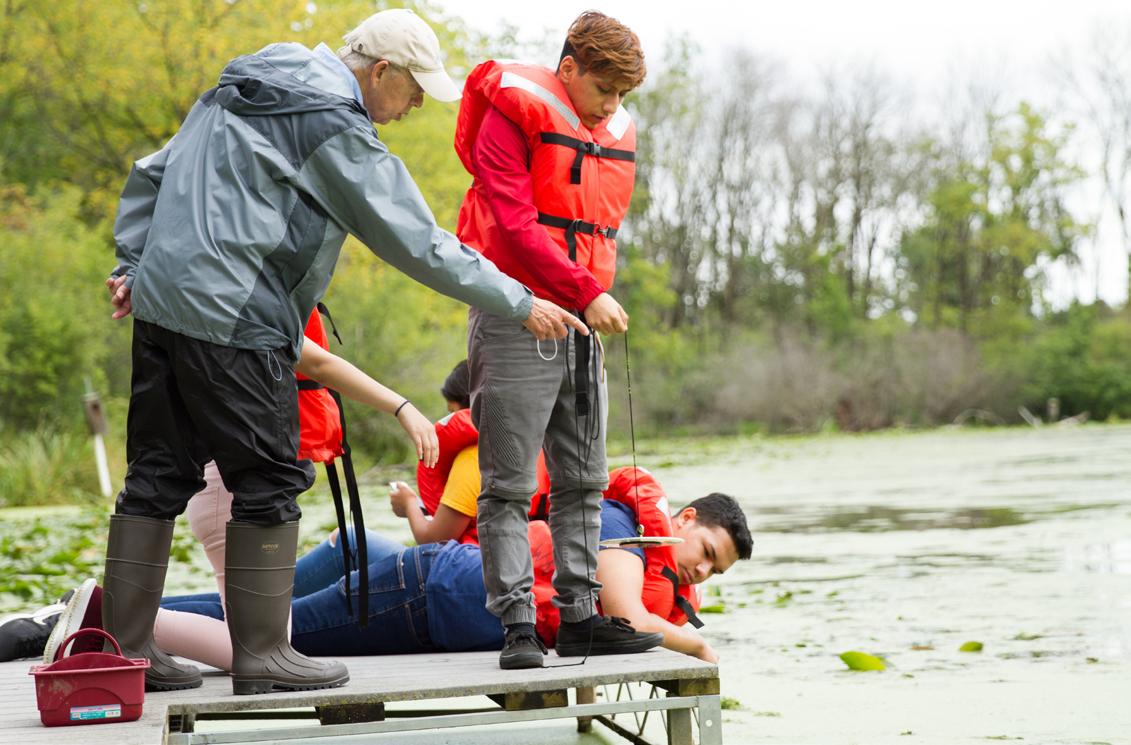
“Wehr Nature Center has transformed our Group 4 Project and has helped us create powerful experiences for students, working together in nature to do science. The different ecosystems, expert volunteers, and a shared love for developing meaningful activities for kids has created a wonderful partnership”. - Reagan High School teacher
9th–12th • 2.5 hours - full day

Let Wehr’s natural areas be a “living laboratory” for your high school classroom. Our staff will work with you to plan a field research experience that supports your classroom learning goals. Students can explore topics such as biodiversity, water quality, ecosystem functions, and invasive species while practicing scientific data collection and analysis. Tools for forestry education, watershed monitoring, as well as DOTS (Digital Observation Technology Skills) kits are available for use at Wehr or to loan for a self-guided project off-site. For more information or to make a program/equipment reservation please email us at wehreducation@gmail.com

4th–Middle School • 2 hours

“Why is there so much grass in the prairie?” “Why do pill bugs live under logs?” Children are challenged to observe and question like scientists as they explore Wehr’s ecosystems. Students compare the kinds of plants and animals found in each environment and use instruments to collect data about the abiotic conditions. An emphasis is placed on observation, measurement, questioning, and critcal thinking skills. Key Concepts: components of ecosystems, interactions, biomes
5th–High School • 2 hours
May–mid-October

Students become environmental detectives as they work to solve the mystery of Wehr’s yucky lake. Groups then rotate through stations where they collect data on the water quality within Wehr’s own Tess Corners Creek watershed. Students use scientific sampling methods and tools such as a biotic index, turbidity tubes, and water chemistry kits to determine the source of pollution impacting Mallard Lake.
Key Concepts: human impacts on environment, watersheds, erosion
3rd–Middle School • 2 hours
May–mid-October

Students discover the “treasures” of our own Lake Michigan as they explore the beach, ravines, and bluffs of Grant Park’s famous Seven Bridges Trail. Children track waves, sift sand, and find fossil rocks along the shore. Groups collect data about water quality and the beach using a turbidity tube, thermometers and wind meters.
Key Concepts: human impacts on environment, geology
4th–Middle School • 2 hours
September–December; April–May

Students travel over moraines and kames as they investigate the impact of the Ice Age on our southeast Wisconsin landscape. A PowerPoint presentation and interactive models introduce the process of glaciation and geological time before we head outside in small groups to “Climb a Moraine.” The hour long walk allows students to get a “foots-on” understanding of landforms as we explore the geological features of Whitnall Park.
Key Concepts: landforms, fossils, geological time
2nd–Middle School • 2 hours
mid-Febuary–March

Come celebrate the sweet Wisconsin tradition of maple sugaring! Students take a trip though time as they participate in a play about the history of maple sugaring from its Native American origins to the maple syrup farmers of today. During a walk through Wehr’s sugar bush, children identify trees, measure trunks to find the perfect sized tree, use hand tools to drill tap holes, and taste and collect sweet sap drips. Students watch us boil the clear sap into maple syrup and sugar and enjoy a taste of each! Everyone becomes a tree part in our “Human Tree Factory” activity that models how tree physiology impacts maple sugaring.
Key Concepts: plant physiology, Wisconsin history
3rd–High School • 2 hours
April–November

Students learn about invasive plant adaptations and how humans can impact the environment for better and for worse. An interactive game models competition for resources and demonstrates how quickly invasive plants can change native landscapes. Children become environmental stewards by pulling Garlic Mustard/Buckthorn.
Key Concepts: human impacts on the environment, adaptations, interactions
Next Generation
Science
Standards
Life Science
LS1: From Molecules to Organisms
LS2: Ecosystems
LS3: Heredity
LS4: Biological Evolution
Earth/Space Science
ESS2: Earth’s Systems
ESS3: Earth & Human Activity
Science Practices
Asking Questions
Using Models
Carrying Out Investigations
Analyzing & Interpreting Data
Mathmatical Thinking
Constructing Explanations
Arguing From Evidence Communicating Information
Wehr offers outreach programs for science nights, high interest days, and classroom enrichment. All programs are offered year-round unless otherwise noted.
2nd–4th • 1 hour
Students delve into the nocturnal world of Wisconsin’s owls and discover facts about the feathers, hearing, and night flying of these beautiful “Tigers of the Sky.” They learn to listen for owl calls right in their own backyard. An owl pellet lab is available for an additional fee of $3 per student.
Key Concepts: adaptations, food webs
1st–4th • 1 hour
Students enjoy a costume comparison of insects, spiders, and other animals without backbones. Students will discover live creatures as they search through soil and wood samples.
Key Concepts: life cycles, adaptations, food webs
1st–4th • 1 hour
Honeybees are not our only bees. Children role play in interactive games to learn about our native Wisconsin bees. Students explore the lives of honeybees, leafcutter bees, bumble bees, and longhorn bees through games and simulations. Help your students develop a positive attitude about pollinators and how to help them thrive.
Key Concepts: adaptations, life cycles, habitats

1st–4th • 1 hour
Dig deep into the world underfoot and meet chipmunks, ants, earthworms, and more in an interactive adventure. Students meet live earthworms or beetles and participate in activities that show what it’s like to live underground.
Key Concepts: animal adaptations, habitats
1st–Middle School · 1 hour
Step back in time to experience life in an early Wisconsin school house. A Naturalist in character conducts a typical school day with slates and slate pencils, quill pens and ink, pioneer games, and classroom “discipline.”
Key Concepts: Wisconsin history
Let’s Leave it to the Beavers
1st–4th • 1 hour
Beavers are nature’s big-time builders with their own tool kit of teeth, paws, claws, and tails. Through interactive theater, simulations, and real beaver artifacts, participants will learn about beaver’s amazing adaptations that are used to create their perfect home.
Key Concepts: adaptations, habitats
1st–4th • 1 hour
Children take an imaginary journey with the Monarch Butterfly as they participate in a life cycle story about the Monarch’s travels to Mexico. Simulations and artifacts enhance the lesson.
Key Concepts: animal adaptations, life cycles
1st–Middle School · 1 hour
Learn the process and history of papermaking. Students create their own paper using recycled paper fibers and learn the importance of recycling in this project. Additional fee of $2 per student.
Key Concepts: art, recycling, use of natural resources
1st–4th · 1 hour
Students are introduced to the world of often misunderstood snakes through interactive theater, simulations, and artifacts. A visit with a live snake is included (weather permitting.)
Key Concepts: adaptations & structures
1st–5th • 1.5 hours
Bring the universe to your students with the Starlab. This portable, inflatable, planetarium projects the night sky for an immersive 360-degree astronomical experience. Starlab supports NGSS through developmentally appropriate and fun programs for audiences K5 and up. Inspire curiosity for the cosmos at your next school science night/fair, high-interest day, or STEM celebration. Room requirements: Rooms must be at least 25 x 25’ with a 13’ unobstructed ceiling. Rooms must be on ground level or with elevators and have the ability to control lights and sound. Contact Wehr Nature Center for options. Pricing starts at $350.
2nd–5th • 1 hour
Children discover the tales told by our wild animal neighbors. The program includes an engaging presentation about animals and their clues, an interactive wildlife mystery story, and an opportunity for each child to create their own wildlife track guide. Key Concepts: adaptations, food webs
1st–3rd • 1 hour
May–September
This program introduces students to the complex lives of honey bees, beekeeping, and the essential role they and other pollinators play in our world. Children don costumes to participate in an interactive story, A Day in the Life of a Honeybee, examine hive equipment to learn what it takes to be a beekeeper, and get a taste of local honey. Live honey bees may be brought using a demonstration hive if season and weather permits.
Key Concepts: adaptations, life cycles
